Superior Capsular Reconstruction Combined With Latissimus Dorsi Transfer for Massive Irreparable Rotator Cuff Tears With Shoulder Hyperlaxity
- PMID: 40822215
- PMCID: PMC12350223
- DOI: 10.1016/j.eats.2025.103620
Superior Capsular Reconstruction Combined With Latissimus Dorsi Transfer for Massive Irreparable Rotator Cuff Tears With Shoulder Hyperlaxity
Abstract
Massive rotator cuff injuries are a frequent and disabling shoulder disorder. Over the years, many treatment options have been proposed, including superior capsular reconstruction and latissimus dorsi transfer. However, in our experience, when these 2 approaches are performed individually, they have achieved suboptimal results in patients with massive cuff injury and concomitant shoulder hyperlaxity, as is most often the case in female patients with Beighton scores ≥4. Therefore, we considered the possibility of combining the 2 treatments, taking advantage of the dual stabilizing action of both approaches in cases of hyperlaxed shoulders with massive and irreparable rotator cuff lesions.
© 2025 The Authors.
Figures












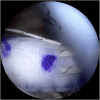


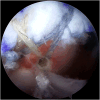

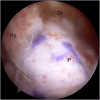



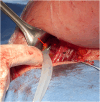




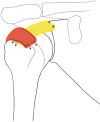
References
-
- Kim J.Y., Park J.S., Rhee Y.G. Can preoperative magnetic resonance imaging predict the reparability of massive rotator cuff tears? Am J Sports Med. 2017;45:1654–1663. - PubMed
-
- Kanatlı U., Özer M., Ataoğlu M.B., et al. Arthroscopic-assisted latissimus dorsi tendon transfer for massive, irreparable rotator cuff tears: Technique and short-term follow-up of patients with pseudoparalysis. Arthroscopy. 2017;33:929–937. - PubMed
-
- Ozturk B.Y., Ak S., Gultekin O., Baykus A., Kulduk A. Prospective, randomized evaluation of latissimus dorsi transfer and superior capsular reconstruction in massive, irreparable rotator cuff tears. J Shoulder Elbow Surg. 2021;30:1561–1571. - PubMed
-
- Cofield R.H., Parvizi J., Hoffmeyer P.J., Lanzer W.L., Ilstrup D.M., Rowland C.M. Surgical repair of chronic rotator cuff tears. J Bone Joint Surg Am. 2001;83:71–77. - PubMed
-
- Zumstein M.A., Jost B., Hempel J., Hodler J., Gerber C. The clinical and structural long-term results of open repair of massive tears of the rotator cuff. J Bone Joint Surg Am. 2008;90(11):2423–2431. - PubMed
LinkOut - more resources
Full Text Sources

